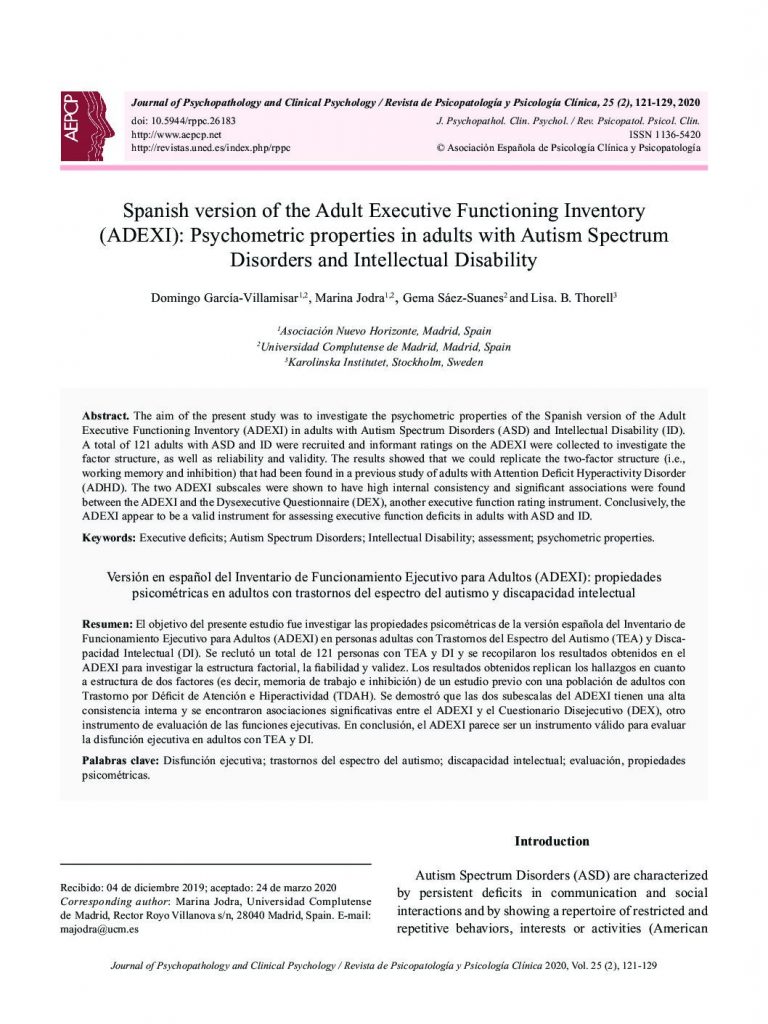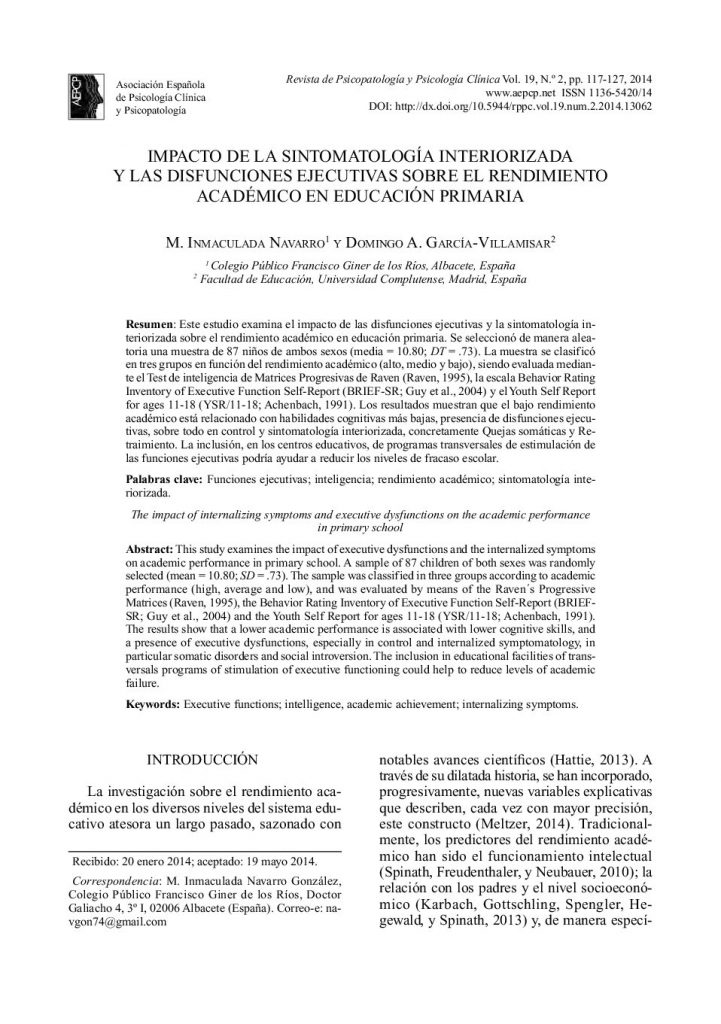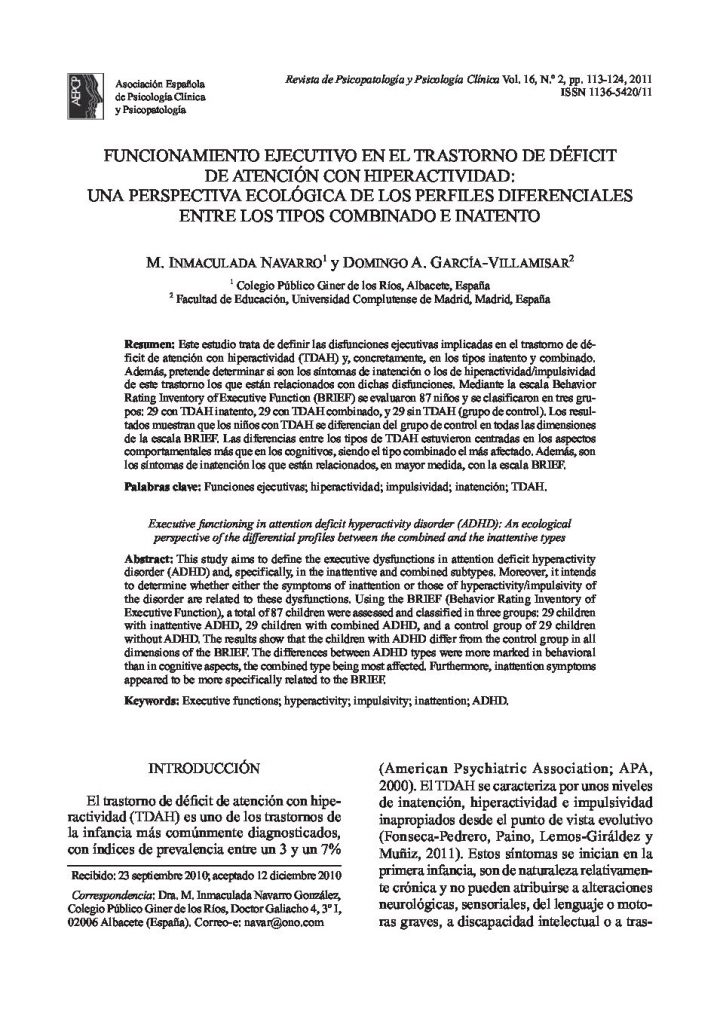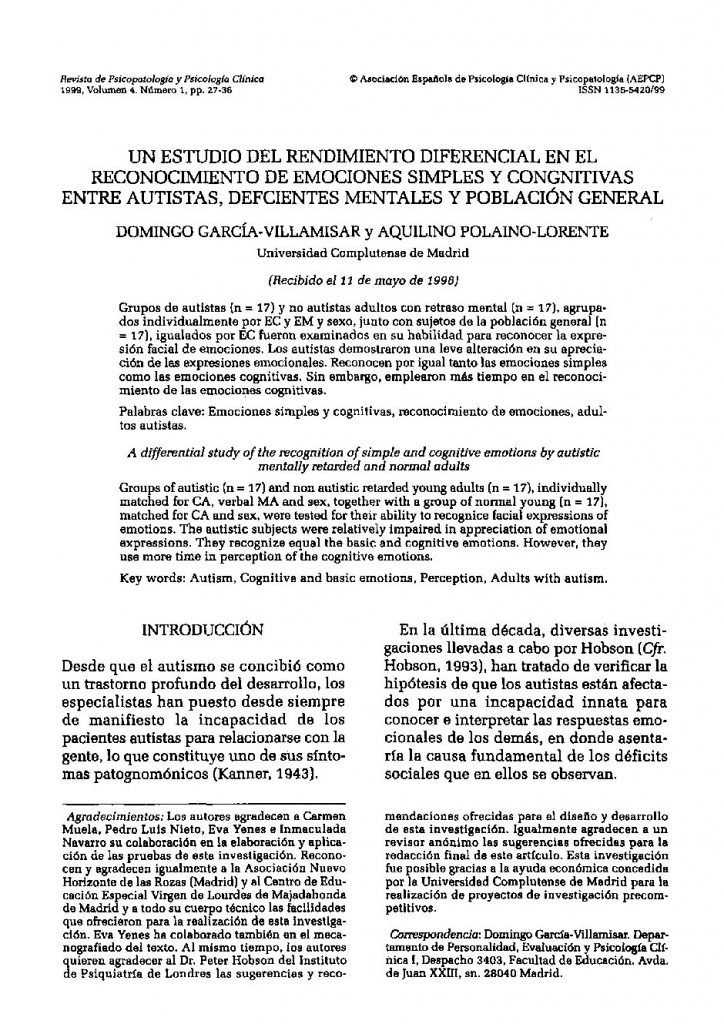Decision making in adults with autism: The role of ecological executive dysfunctions
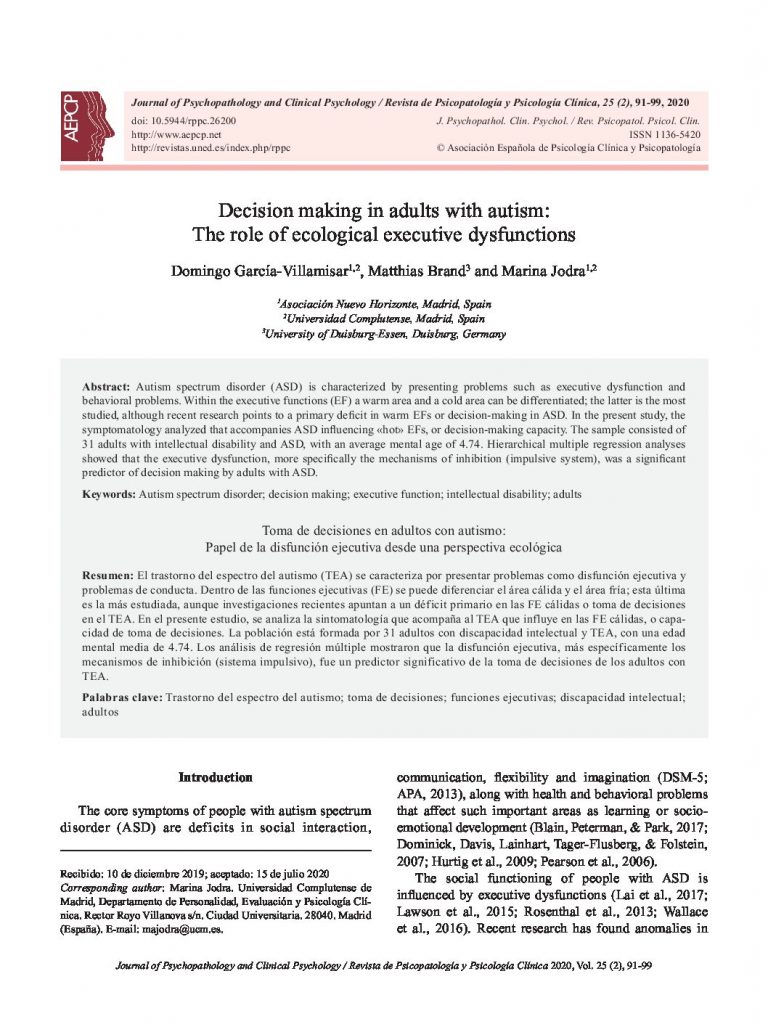
- Trastornos de atracción sexual hacia animales: Clasificación diagnóstica basada en una revisión sistemática
- Spanish version of the Adult Executive Functioning Inventory (ADEXI): Psychometric properties in adults with Autism Spectrum Disorders and Intellectual Disability
- Evidencias de validez y fiabilidad de la versión en español del Children’s Depression Inventory-Short en población peruana
- Factor structure of the Posttraumatic Growth Inventory in a Spanish sample of adult victims of interpersonal violence in childhood
- Decision making in adults with autism: The role of ecological executive dysfunctions
- Psychological distress in critically ill patients: Risk and protective factors
El trastorno del espectro del autismo (TEA) se caracteriza por presentar problemas como disfunción ejecutiva y problemas de conducta. Dentro de las funciones ejecutivas (FE) se puede diferenciar el área cálida y el área fría; esta última es la más estudiada, aunque investigaciones recientes apuntan a un déficit primario en las FE cálidas o toma de decisiones en el TEA. En el presente estudio, se analiza la sintomatología que acompaña al TEA que influye en las FE cálidas, o capacidad de toma de decisiones. La población está formada por 31 adultos con discapacidad intelectual y TEA, con una edad mental media de 4.74. Los análisis de regresión múltiple mostraron que la disfunción ejecutiva, más específicamente los mecanismos de inhibición (sistema impulsivo), fue un predictor significativo de la toma de decisiones de los adultos con TEA.



